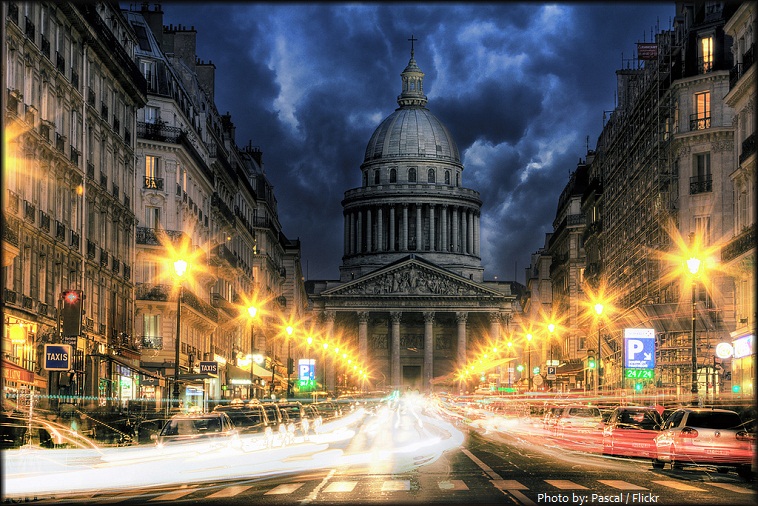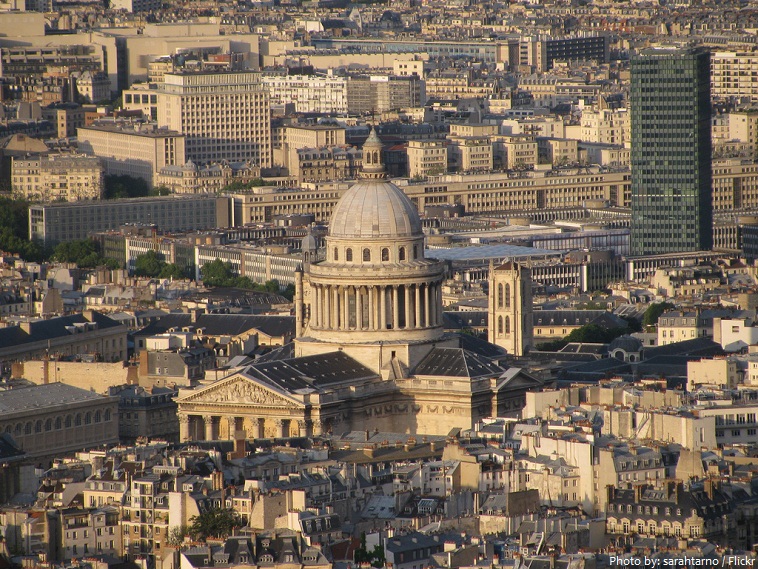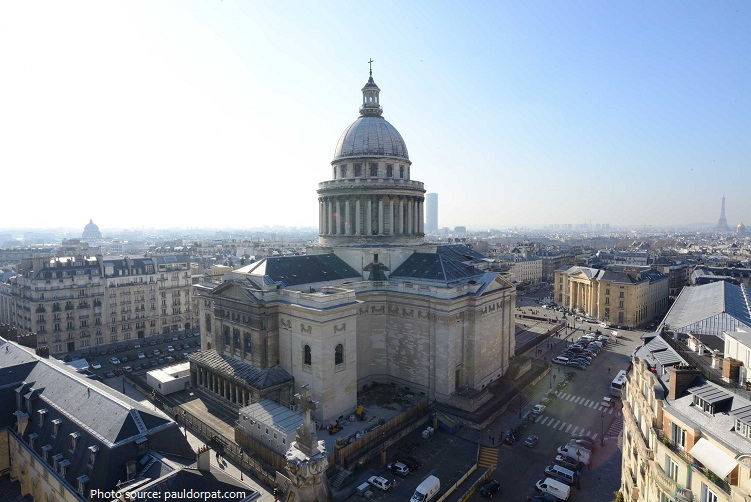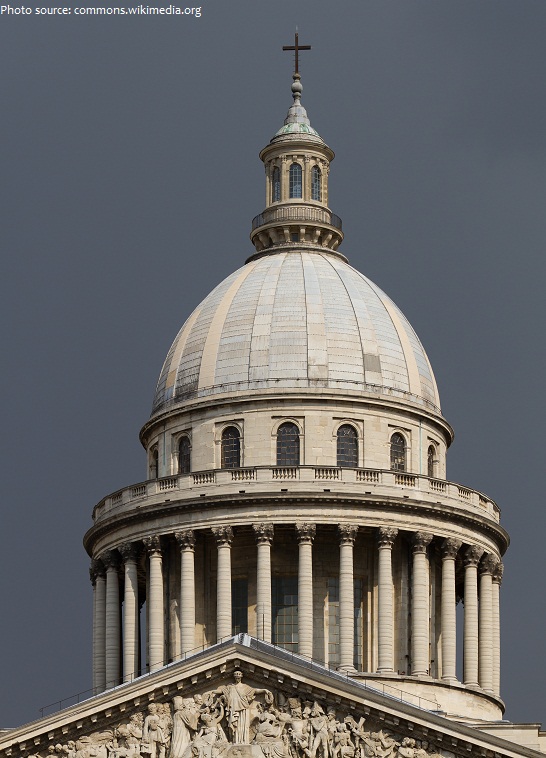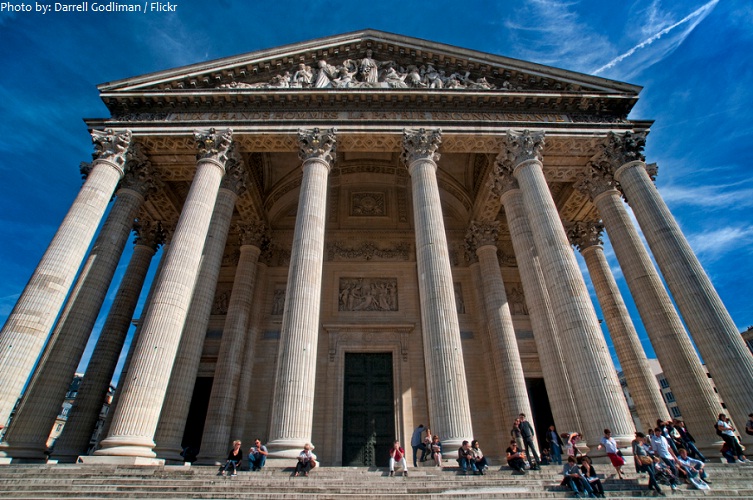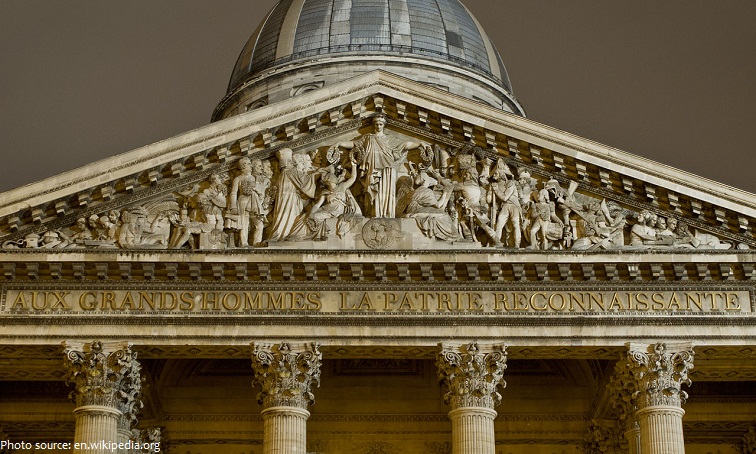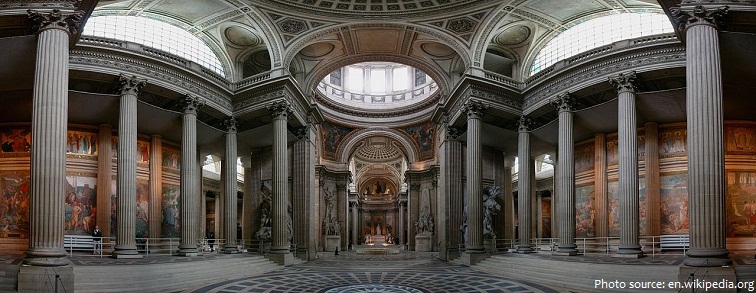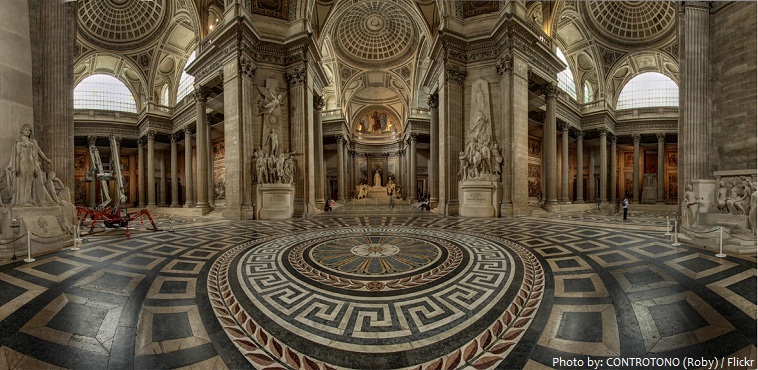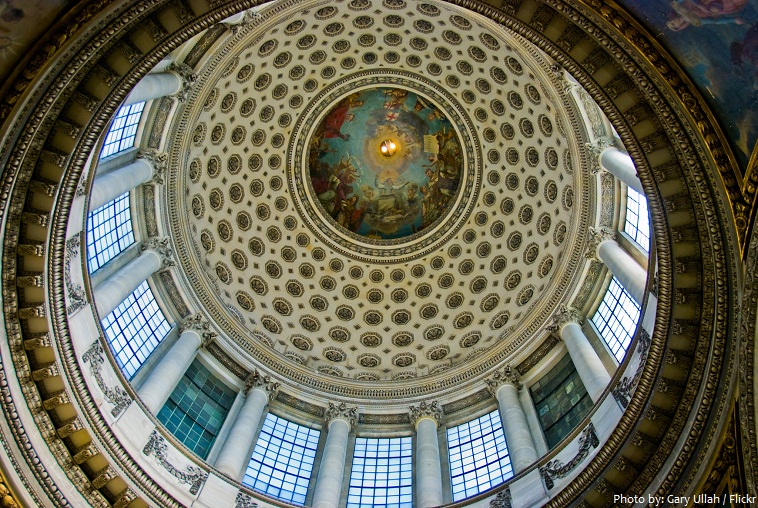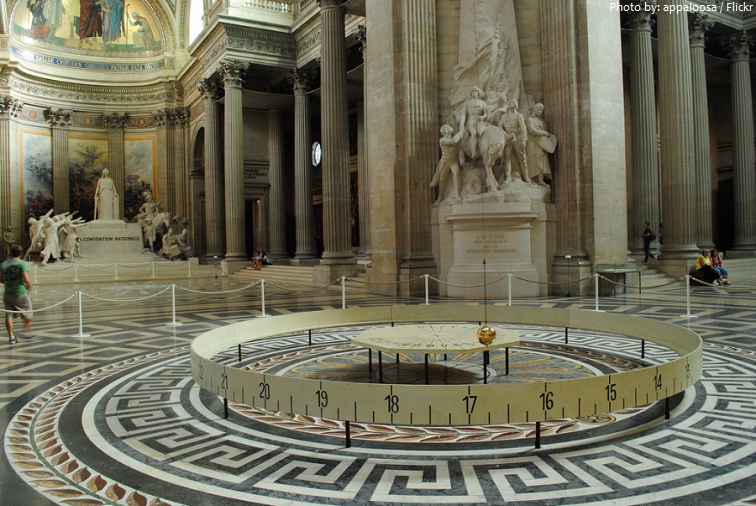The Pantheon is a building in the Latin Quarter in Paris.
It was originally built as a church dedicated to St. Genevieve, but now functions primarily as a burial place for famous French heroes.
It is an early example of Neoclassicism, with a facade modelled after the Pantheon in Rome surmounted by a dome that owes some of its character to Bramante’s “Tempietto”.
Located in the 5th arrondissement on the Montagne Sainte-Geneviève, the Panthéon looks out over all of Paris.
Its architect, Jacques-Germain Soufflot, had the intention of combining the lightness and brightness of the gothic cathedral with classical principles, but its role as a mausoleum required the great Gothic windows to be blocked.
King Louis XV vowed in 1744 that if he recovered from his illness he would replace the ruined church of the Abbey of St Genevieve with an edifice worthy of the patron saint of Paris.
The king regained his health, and the Marquis of Marigny was entrusted with the fulfillment of the vow. Marigny’s protégé Jacques-Germain Soufflot was charged with the plans, and the construction of the Panthéon began.
The foundations were laid in 1758, but due to the economic problems in France at this time, work proceeded slowly. In 1780, Soufflot died and was replaced by his student, Jean-Baptiste Rondelet. The remodeled Abbey of St. Genevieve was finally completed in 1790, coinciding with the early stages of the French Revolution.
The Revolutionist government changed the church into a mausoleum, a place to burry exceptional Frenchmen who had sacrificed their lives for their country or who had done something great for France. The Pantheon flipped back and forth to a church over the years but eventually assumed its lasting role as a burial place for martyrs and brilliant French citizens for good.
The overall design was that of a Greek cross with massive portico of Corinthian columns. Its ambitious lines called for a vast building 110 meters (361 feet) long by 84 meters (275 feet) wide, and 83 meters (272 feet) high.
The large dome reaches a height of 83 meters (272 feet). The dome features three superimposed shells, similar to the St. Paul’s Cathedral in London.
The portico, with 24 large Corinthian columns was modeled after the second century Pantheon in Rome.
The inscription above the entrance reads AUX GRANDS HOMMES LA PATRIE RECONNAISSANTE ( “To great men, the grateful homeland”).
The interior is decorated with mosaics and paintings of scenes from French history, some of which were executed by Puvis de Chavannes.
The pediment has sculptures by Pierre-Jean David d’Angers of post-Revolutionary patriots.
The triple dome, each shell fitted within the others, permits a view through the oculus of the coffered inner dome of the second dome, frescoed by Antoine Gros with The Apotheosis of Saint Genevieve.
The large crypt, covering the whole surface of the building accommodates the vaults of great French public figures. Some of the most famous buried here are Voltaire, Rousseau, Victor Hugo, Émile Zola, Jean Moulin, Louis Braille, Jean Jaurès and Soufflot, its architect.
In 1851 physicist Léon Foucault demonstrated the rotation of the Earth by his experiment conducted in the Panthéon, by constructing the 67-meter (220 feet) Foucault’s pendulum beneath the central dome. The original iron sphere from the pendulum was returned to the Panthéon in 1995 from the Conservatoire. The original pendulum was later returned to the Musée des Arts et Métiers, and a copy is now displayed at the Panthéon.
From 1906 to 1922 the Panthéon was the site of Auguste Rodin’s famous sculpture The Thinker.
On 30 November 2002, in an elaborate but solemn procession, six Republican Guards carried the coffin of Alexandre Dumas (1802–1870), the author of The Three Musketeers and other famous novels, to the Panthéon. Draped in a blue-velvet cloth inscribed with the Musketeers’ motto: Un pour tous, tous pour un (“One for all, all for one”), the remains had been transported from their original internment site in the Cimetière de Villers-Cotterêts in Aisne, France.
